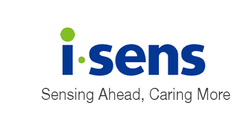
Aging and Metabolic Health
Aging is associated with various physiological changes, including alterations in metabolic health, and is known to be a key nonmodifiable (ie, factors that cannot be controlled or changed) factor for various chronic and metabolic diseases, including cardiovascular (ie, heart and blood-vessel related) diseases (CVDs), cancers, diabetes, neurodegenerative diseases (eg, Alzheimer’s disease), and metabolic syndromes.1–3
Aging & Weight
It is well known that aging is associated with weight gain.1 Both longitudinal and cross-sectional studies have found that both men and women experience a weight gain of 0.3-0.5 kg/year between the ages of 40 and 66. However, it is important to note that the overall weight gain experienced with aging is represented by both a gain in body fat and a loss in lean muscle mass. The loss of lean muscle mass from primarily skeletal muscle and organs such as liver is considered particularly important for metabolic health as lean tissue plays a significant role in metabolism and energy expenditure. In addition, gain in body fat with age is primarily a result of gain in visceral fat (ie, fat deep in the abdomen surrounding organs), which is known to affect metabolic health more negatively than peripheral fat (ie, fat in legs and arms). Studies have shown that visceral fat mass releases hormones and free fatty acids into the bloodstream which can disrupt regulation of metabolism.4–7
Aging & Heart Health
Although various factors are associated with the development of CVDs, aging is one of the major risk factors.8 The 2021 Heart Disease and Stroke Statistical Update by the American Heart Association reported that the incidence of CVD in males and females ages 60-79 was 77.5% and 75.4%, respectively, and the incidence rises to 89.4% and 90.8% for males and females, respectively, above the age of 80.8,9 It is thought that various age-related electrical and functional defects of the heart result in an increased prevalence of CVDs in older adults. Oxidative stress (ie, imbalance of antioxidants and free radicals resulting in cellular damage), inflammation, and deterioration of the heart muscles are known to be some of the factors. These can cause thickening of both the walls of blood vessels and heart tissue, affecting their elasticity as well as the heart’s electrical signaling.8,10,11 In addition, obesity and diabetes become more prevalent with age, which are independent risk factors for developing CVDs.
Aging & Diabetes
Diabetes is known to be an age-related metabolic disorder that is highly prevalent in the older adult population.12 More than half of adults over 65 years of age are known to have prediabetes and more than one-fourth have diabetes, with older adults developing diabetes nearly three times faster than younger adults.13 It is thought that age-related physiological changes, genetic factors, and lifestyle factors combined put older adults at a greater risk of developing type 2 diabetes mellitus. In various rodent studies, aging has been implicated to impair pancreatic b-cell regeneration and adaptation to insulin resistance, resulting in impaired insulin secretion. The development of insulin resistance in older adults is currently understood to be a result of age-related physiological and lifestyle changes such as weight gain and obesity (particularly gains in visceral fat), loss of lean tissue, and reduced physical activity.
Staying Metabolically Healthy
Although certain metabolic changes with aging cannot be entirely prevented, studies have shown that lifestyle changes can significantly improve health and quality of life.1 Eating a healthy diet and living a physically active lifestyle has shown to help combat age-related development of metabolic syndrome and insulin resistance. It is recommended that older adults consume adequate amounts of dietary protein and engage in regular exercises to prevent both the excessive loss of lean muscle mass and excessive gain of fat.
|
References: |
(Disclaimer)
The content of this article is intended to provide a general information and knowledge on the subject matter. The views expressed in newsletters, articles, and blogs in the i-SENS USA website are not necessarily those of i-SENS Incorporated, i-SENS USA Incorporated or our publishers. Medical or nutritional information on i-SENS USA website is not intended to replace professional medical advice – you should always consult a specialist with any questions about your specific circumstances.





Add a comment